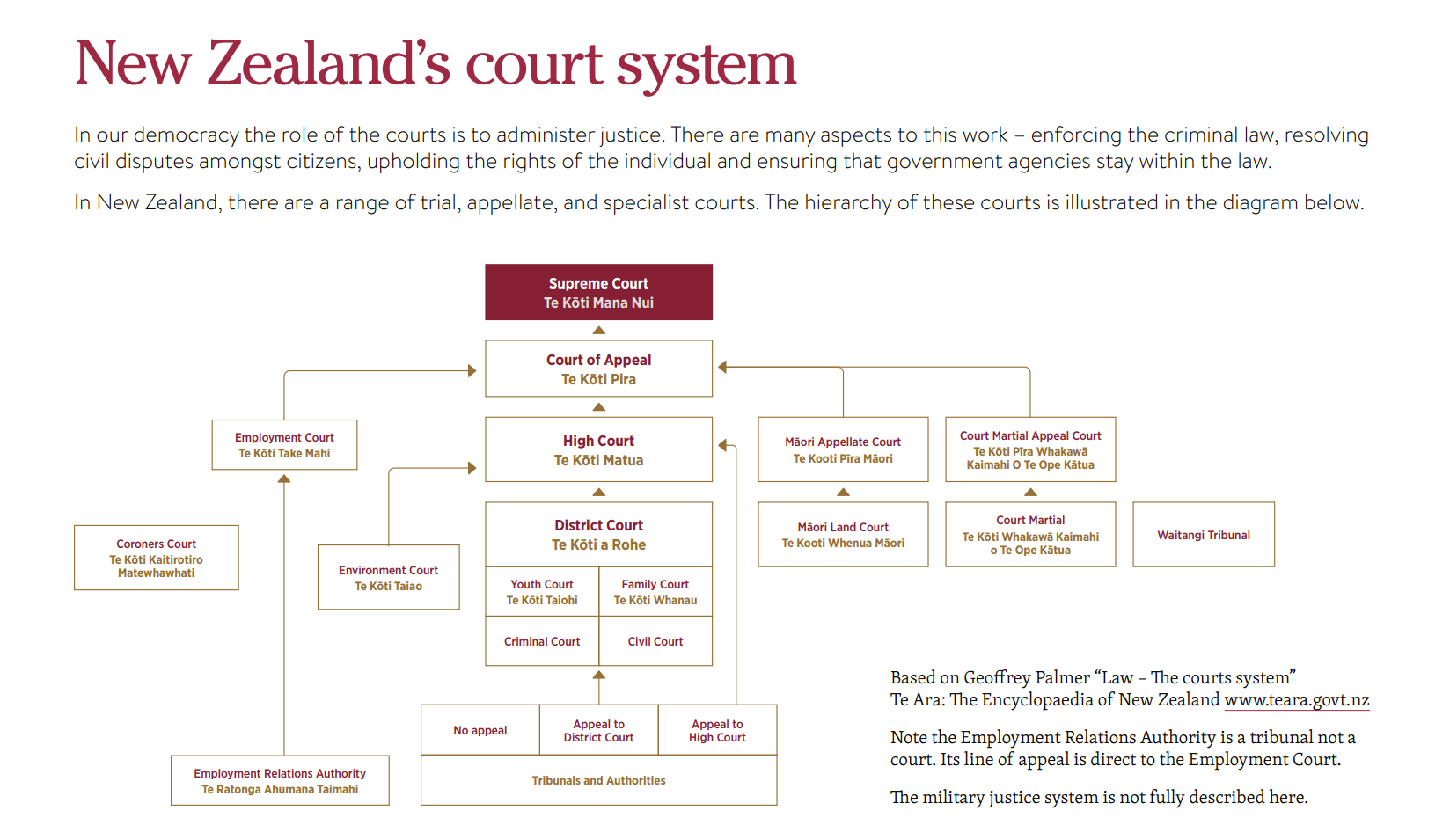Structure of the court system

There are 4 main levels in our court system which are outlined below.
Te Kōti ā Rohe, the District Court
The first is Te Kōti ā Rohe, the District Court. Most large towns and cities have a District Court and it is the busiest court. The Family Court and Youth Court are part of the District Court. Most criminal cases are heard in the District Court. A large number of civil cases are heard in the District Court where the amount in dispute is less than $350,000.
Te Kōti Matua, the High Court
The next level in our court system is Te Kōti Matua, the High Court. It is the highest court in which cases can start. The most serious criminal and civil cases, where the amount in dispute is $350,000 or more, are heard in the High Court.
Most of the criminal cases in the High Court are decided by juries. The High Court also hears complex civil cases, administrative law cases and appeals from the decisions of courts and tribunals below it.
If one of the parties are not satisfied with the result of a court case, then that case can be appealed to a higher court. A case in the District Court is appealed to the High Court or where the law allows directly to the Court of Appeal.
Te Kōti Pīra, the Court of Appeal and Te Kōti Mana Nui, the Supreme Court
Te Kōti Pīra, the Court of Appeal and Te Kōti Mana Nui, the Supreme Court are the top two courts. They are the appeal courts.
The Court of Appeal has a key role in developing legal principle, correcting errors, and ensuring that the law is applied consistently. It hears civil and criminal appeals from cases in the High Court and, criminal appeals from jury trials in the District Court. If leave is granted the Court of Appeal can also hear criminal appeals against pre-trial rulings; appeals on questions of law from the Employment Court; and second appeals from decisions of other courts and tribunals.
Te Kōti Mana Nui, the Supreme Court, is the highest and final court. It only hears cases when the Supreme Court judges grant leave to appeal. The criteria for granting leave to appeal are set out in s 74 of the Senior Courts Act 2016.
The Supreme Court can agree to hear an appeal only where it involves a matter of general importance, a matter of general commercial significance or a significant issue relating to the Treaty of Waitangi, or where a substantial miscarriage of justice may have occurred.
A decision of a higher court is binding on lower courts and decisions of the Supreme Court, the final court of appeal, are binding on all other courts.
Cases that are legally similar will generally be decided in the same way, conforming with the decisions of a higher court. This is called the rule of precedent. It ensures consistency and certainty in how the law is applied.
Specialist courts
There are also specialist courts in our court system; the Employment Court, the Environment Court and the Māori Land Court. The Waitangi Tribunal, Coroners Court and the Courts Martial Appeal Court are also part of the system.
Find a PDF version of the 'New Zealand's court system' diagram for download here:
New Zealand's court system (PDF 121 KB)
